Insights
Articles
8 August 2025
14 min read
The Essential Startup Stack: Tools You Need From Day One As A Startup
Abigail Aghaibie
Gozade

Introduction
Launching a startup may feel fast-paced, and chaotic at the same time, but it has a whole lot to do with strategic speed instead of simply rushing to put a product out there for the sake of it. You are juggling product builds, hiring, marketing, and fundraising all at once. It already sounds overwhelming, right? Without the necessary arrangements in place, even the best ideas fail. Little wonder why 20% of small businesses fail in the first year.
That’s why having the right tool stack from the start is very critical. The tools you choose in your first month can either accelerate your workflow or create roadblocks that slow your growth. You need structure, but not at the expense of flexibility. Hence, the need for tools that work well together, and not feel like separate systems.
This article gives an overview. The essential software you’ll need across the most critical startup functions: project management, communication, product development, finance, marketing, automation, and more. This allows you to focus more on your vision, and less on the uncertainty surrounding picking from a plethora of options.
1. Project Management & Team Collaboration
There is no one-size-fits-all project tool. It all depends on a number of factors, like how your team operates, and how much structure you really need. Here's what you should know before picking one:
Trello
Trello is a great visual project manager pick for founders who want something lightweight, visual, and easy to learn. The free version gives you more than enough to get started, especially if you like working with checklists or mapping things out visually. It’s super simple to use and works well on mobile, so you can jot down ideas whenever they come. Templates are easy to reuse, which makes repeatable tasks feel effortless. That said, it’s not the best option for handling complex projects like product launches unless you start adding power ups (like Calendar, Google drive, Gnatt Chart, and Approvals).
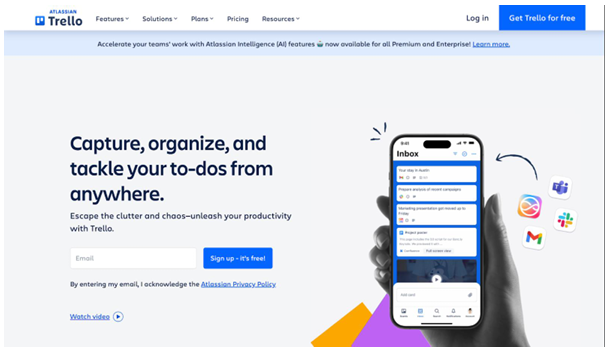
Asana
Asana feels like the project management tool that wants you to enjoy using it with its visual appeal. It is a great tool to maintain control over what each person sees. You can keep certain projects private or only share specific tasks, which is handy if you’re working with external collaborators or slowly building your team. And when it comes to managing your week, Asana really shines. Whether you're planning contents, meetings, or keeping tabs on what needs to happen next, it keeps your calendar and tasks feeling connected. Asana offers some extra features compared to Trello. This includes integrated time tracking and essential project resource planning. Perfect fit for less technical teams.

ClickUp
ClickUp is best for teams of three or more. It is a robust tool compared to other project management tools out there. It includes some additional functionalities for agile workflow and web development management, such as sprint management and github integration. This tool is made for people who love having extra features and actually use them. It’s not the simplest tool out there, it is built for handling complex launches without falling apart. Hence, the platform may feel laggy. If you’re comfortable navigating software and like having control over every detail, ClickUp gives you all the levers.
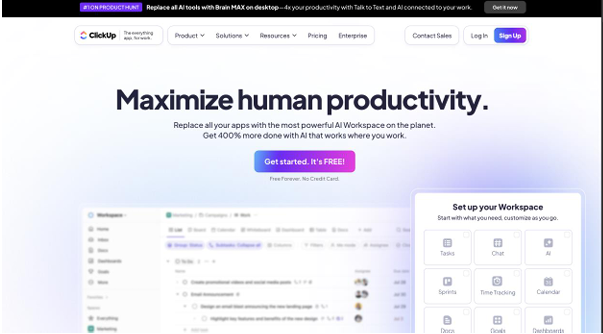
Slack
Slack, launched in 2013, has quickly become a popular app amongst startups looking to improve internal communication. Slack offers a real-time collaborative environment, while allowing teams to chat at the same time. You can set up channels for everything: projects, topics, departments, clients, etc and instantly add in whoever needs to be there. It integrates with third-party tools like Google Drive, Zoom, and ClickUp, to keep workflow diverse and seamless, allowing file sharing, video calls, audio calls etc.
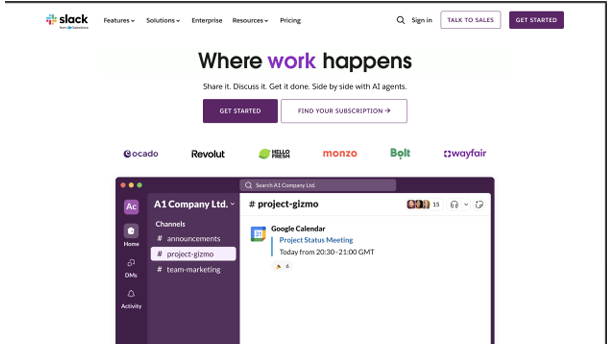
2. COMMUNICATION INFRASTRUCTURE
Your startup needs more than just WhatsApp and a Gmail account. Every business needs effective communication to thrive. From team, down to investor meetings, your communication tools should support you at every stage, even if you are working across different time zones.
Google Workspace
Google Workspace covers the basics of everything you need to keep your startup going. Business email, shared calendars, Docs, Sheets, and Drive all under one login. These integrated apps make google workspace an ideal tool for communication, document creation, file storage etc. It is simple, reliable, and easy to manage as your team grows.
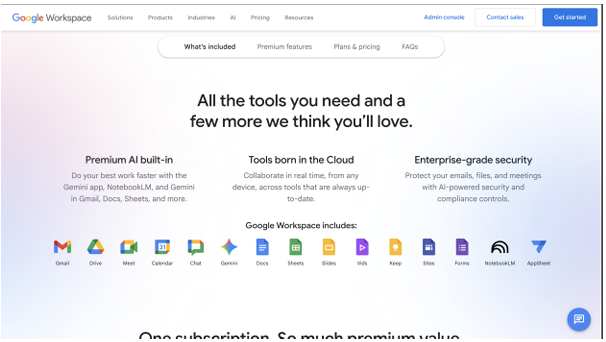
Zoom
Zoom is best for client meetings, pitch calls, or anything that needs face time. The interface is clean and familiar enough that nobody needs a walkthrough. You can schedule recurring meetings, record sessions, and screen share with little to no problem at all.
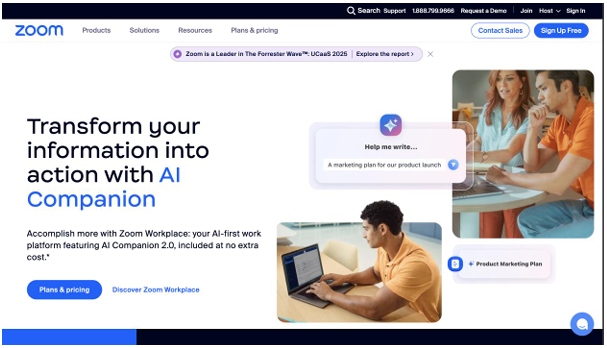
Discord
Discord may have started as a communication tool for gamers but has quickly evolved into a surprisingly powerful tool for startup teams that like to move fast. It is easy to set up, great for voice chats, and its segmented channels adds organization to team updates.

3. ANALYTICS & DATA INTELLIGENCE
You cannot monitor what you don’t track. For any startup looking to build something that lasts, assessments must be made. From website visits to user behaviours, early data shows clear details of what is working, and what isn’t. Every data point is golden; it tells you what your clients love, and what they find confusing. Without these insights, your organization wastes budget, time, and team efforts on frivolities. Here are some top tools in this category:
Google analytics
Google analytics is simple, free, and packed with insights. It is the gold standard for tracking what happens on your website. You can see how visitors arrive, what pages they check out, and where they drop off. Set up goals, monitor traffic by location or device, and get detailed insights without spending a penny. It’s powerful, free, and built for scale, whether you're serving hundred users or a million, it grows with you.

Tableau
Tableau is a leading Business Intelligence (BI) and data visualization tool that turns messy data into clean, interactive, and shareable dashboards. If you’re navigating bigger data sets or need visuals for investors, Tableau helps turn raw numbers into charts that actually make sense. Unlike traditional BI tools that require extensive technical know-how to interpret and analyze data, Tableau prioritizes user friendliness, allowing both new users and power users to create and analyze complex data with relative ease.
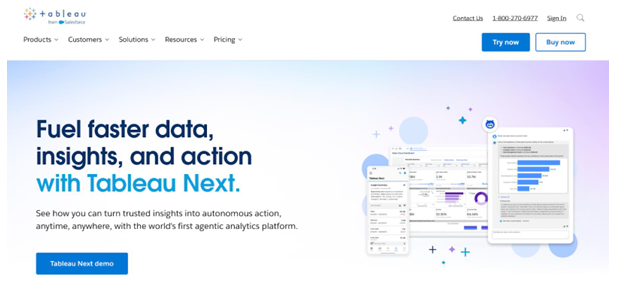
4. MARKETING & SOCIAL MEDIA MANAGEMENT
Your products won’t sell themselves; even the best of ideas need to be repeatedly seen and heard by people. Being a founder isn’t about building alone, you are broadcasting alongside. These tools ensure your message travels far, and reaches where it matters.
Mailchimp
Mailchimp is a software that helps businesses set up their email lists. It is as easy as building a list, sending updates, and automating followups. Mailchimp makes email marketing simple and very easy to use, even if it is being done all solo. It is perfect for launching a newsletter, announcing new features, or turning first-time users into loyal fans through consistent emails. It is beginner-friendly and perfect for building a community from scratch.

Buffer
Buffer is a multipurpose social media marketing tool that helps draft and schedule posts for sharing across a number of social media platforms, including Facebook, Instagram, X (formerly known as Twitter), LinkedIn, and TikTok. Buffer works in three different feature modes.
Publishing: The core functionality of buffer, where you draft and schedule posts to be sent on various social media platforms.
Analytics: The hub where you see how your posts are performing.
Engagement: This module surfaces every comment, mention, and messages dropped on Instagram, so your team can act fast.

5. CUSTOMER RELATIONSHIP MANAGEMENT (CRM)
CRM stands for Customer Relationship Management, but it’s more than just a fancy acronym. It’s the main center for how modern businesses handle customer interactions, track engagement, and streamline internal workflows. These tools help businesses generate new leads, convert them to customers, and most importantly, help keep the relationship alive post-sale. For example, Marketing teams often use CRMs to automate and manage campaigns, making customer journey more targeted and efficient. Sales teams rely on them to boost productivity by automating repetitive tasks. On the support side, CRMs help teams respond faster, resolve smarter, and strengthen customer loyalty. From email marketing to e-commerce, CRM platforms are becoming a must-have tool for startups looking to boost productivity.
Hubspot
Hubspot is the perfect CRM tool for small businesses. First, it is free, at least the version that gets you started. And for a lot of small teams, that’s already more than enough for a perfect start. You can track leads, keep up with email outreach, and organize your sales efforts without spending a dime. Hubspot offers the perfect free version that can be upgraded as your business scales. It’s also very easy and intuitive to navigate. You won’t get lost in complicated dashboards or endless setup. Everything’s cloud-based, clean, and built for people who want to move fast without dealing with the complexities from other CRMs. That’s probably why it’s one of the most talked-about CRMs around. From its calendar system, document storage, email marketing, lean storage, task management etc, it is the perfect fit for you.
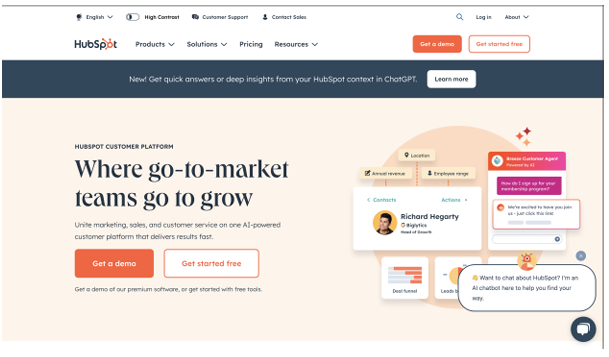
Zoho CRM
Zoho CRM is one out of the numerous successful Zoho products out there. It is part of a big set, with the whole set made by the same team. So if you are already using Zoho’s other apps, like Calendar, Invoice, Analytics etc, it is very easy to get them integrated with Zoro CRM perfectly. Interestingly, Zoho CRM added a bit of gamification to their workflow, making the whole CRM process feel like a game. You earn points, ranks, and track your way all up.That said, it is not perfect, the interface may confuse new users. The report isn’t as robust as some may want, and for those that want lots of third-party integrations, they may find limits. It has one of the best pricing plans out there compared to other CRM platforms while offering just as much — calendar & integration system, internal chat integration, marketing automation integration, quotes?proposals, segmentation etc.
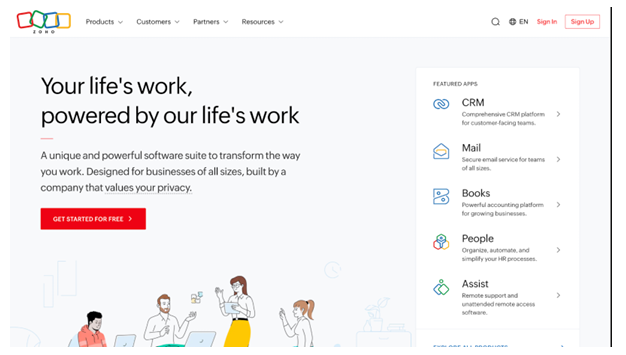
6. PRODUCTIVITY, FORMS & AUTOMATION.
Some of the smartest startups don’t look busy. That’s because they’ve already automated the boring parts. Scheduling meetings, connecting apps, collecting feedback; things that would normally eat up your day. No one is glued to email threads or buried in spreadsheets. They’ve set the systems, and those systems run quietly in the background. This is where productivity, forms and automation tools come in.
Calendly
Calendly is a virtual availability and booking app that makes scheduling easy. You just share a link, and people pick a time that works for them. No long email threads, no confusion. Organizations share their availability using Calendly without having to say a word, or a link with a specific time for booking a slot. Perfect for teams, schools, or anyone tired of back-and-forth. Calendly is a trusted name, which can foster trust when scheduling client appointments. The free plan handles one meeting type, which is enough to get started. But if you’re managing different kinds of calls, the paid plans unlock more flexibility; custom event types, reminders, intake forms, even automated workflows. It connects with most of the startup favourites: Google Calendar, Outlook, Zoom, HubSpot, and more. Plus, it has smart routing and a Chrome extension that lets you drop booking links straight from Gmail or LinkedIn.
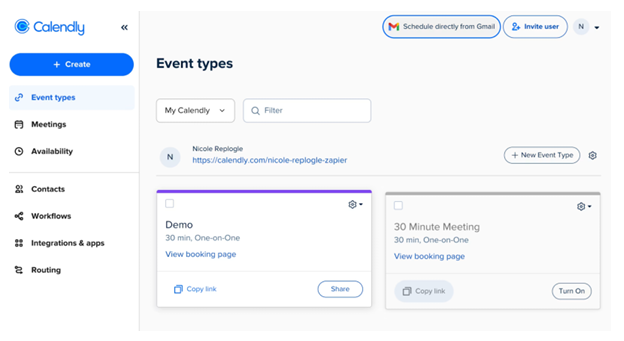
Zapier
Zapier is a workflow automation tool that connects apps and automates repetitive tasks. Zapier is an ideal tool for small scale businesses to streamline operations without the need for coding, such as e-commerce teams, social media managers etc. Zapier makes workflow smoother by quietly running complex operations in the background and links your favorite apps seamlessly. But while it’s a powerhouse, the free plan can feel a bit limited, and getting to work around complex workflows requires in-depth setup knowledge. Also, if you're hoping to run it from your phone on the go, it doesn’t have a dedicated mobile app yet.
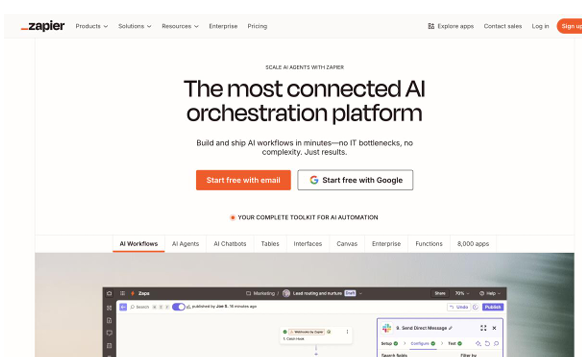
Typeform
Typeform is a cloud-based form and survey builder that creates quizzes, questionnaires, and surveys and makes them sound conversational compared to traditional surveys. Instead of slamming every question on the screen at once, Typeform displays them one at a time. Its conversational approach helps make people locked in without distractions. This unique approach has made Typeform a go-to for lead capture, customer feedback, and creative quizzes. Its smooth, friendly use flow translates directly into higher response rates. Asides this unique feature, Typeform ready-made templates and themes, real-time analytics, integration tools, and logic jumps and branching (Show or hide questions based on previous answers to create shorter, smarter, personalized paths, even on a free tier) makes it a popular tool among startups.
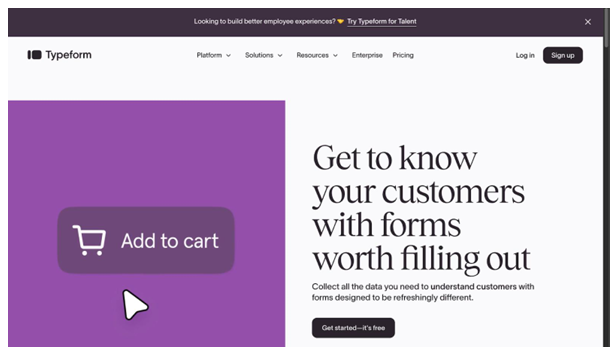
7. PAYMENT PROCESSING
I know founders don’t like to talk about money so as not to sound desperate, lol. But then it doesn’t change the fact that the primary aim of every business is to make profit. If clients can’t pay you easily, they probably won’t pay you at all, and ditch your services.
A clunky checkout page or sketchy payment flow is enough to make clients reconsider paying you. That’s why getting your payment and ecommerce setup right is very paramount. Being a startup isn’t only about putting yourself out there, it is also about wanting to receive payment the moment a client shows interest.
Paypal
Paypal has been here for a long time, and for a good cause; it’s easy, super easy to use. This makes it a popular choice for new users. Once you add your products, you customize the smart payment button. You also have the choice to customize your button look (shape, logo, card choices), copy the code, and put it on your webpage. Done. On the customer side, it’s even more simple. They can pay with their PayPal; cash, a saved card, or just type in their info without any need for a paypal account. It is all done safe, with built-in fraud watch and help if an order goes south. But here’s the thing you’d often hear; Paypal’s fees are a bit confusing. It’s usually a flat fee plus a small percentage of the sale, but the exact numbers shift based on what kind of transaction it is or where your customer is. In all, it is popular, effective, and very simple. Just keep an eye on the costs.
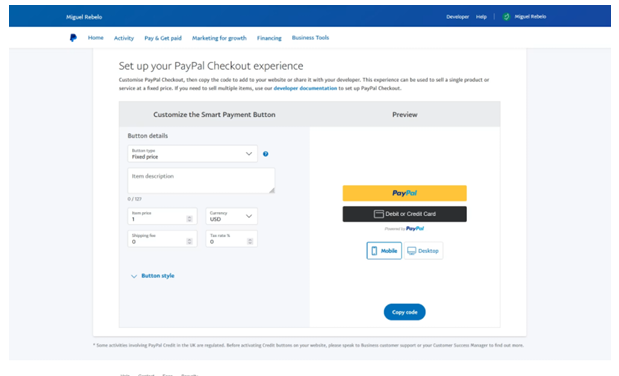
Stripe
Stripe is like the power tool for online payments. As soon as you land on the dashboard, you'll realize that Stripe is sophisticated. It is built for control, packed with features, and made to scale. If you’re looking for something simple and intuitive, it might feel like a little too much at first. But once it’s set up, it can do just about anything.
There are three main ways to use stripe in your business:
- You can drop in an embedded payment form right on your site. It’s fully customizable, but it requires some coding to setup.
- On a lighter side, you can add a Stripe button onto your page that triggers a secure pop-up. Customers input their card details there, the payment button unlocks, and then the transaction is completed. Still needs a bit of coding to get it running smoothly.
- Or keep it simple and redirect customers to Stripe’s hosted checkout page. It looks sharp, handles all the complex work, and once the payment’s done, your client gets redirected back to your site.
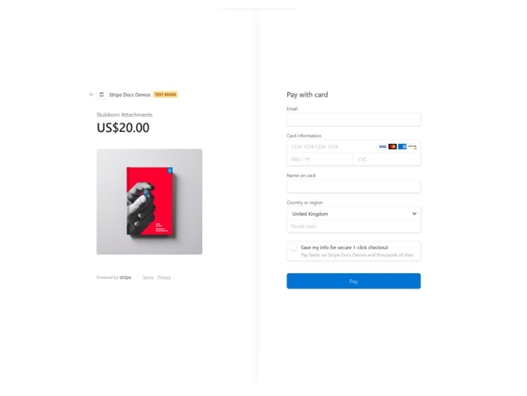
CONCLUSION
Most startups fail, not because the idea was bad. They crumble because of the weight of the chaos that comes with sustaining a business. That’s where the right tools come in. From tracking leads to collecting payments and scheduling meetings without the endless back-and-forth. You don’t need to be a tech genius. Pick smart, automate what needs to be, and keep your focus on what really matters, your product, your clients, and your vision.
FAQS
1. Do I need all these tools from day one?
Nope. Start with what solves your biggest pain right now. You can always layer more in as you grow.
2. Can I run most of these on free plans?
Yes. Tools like HubSpot, Calendly, and Typeform have solid free tiers that work well for early teams.
3. What if I’m not technical?
You’re good. Most of these tools are made to be plug-and-play. If it gets tricky, there’s usually a setup wizard or help guide.
4. How do I choose between tools that do similar things?
Think about your workflow. Pick the one that feels natural, integrates easily, and doesn’t slow you down.
5. Will these tools still work when my team grows?
Absolutely. Most of them scale with you, more features unlock as you upgrade. Start lean, grow smart.
TAGS:
Build what matters, with Gozade
Let's Talk
Gozade
HOUSE NO. 33C, ROAD 2, IKOTA VILLA ESTATE, IKOTA, LEKKI, LAGOS
+2349032770671, +2349032942619
Gozade builds smart digital solutions that help businesses grow and scale with confidence.

